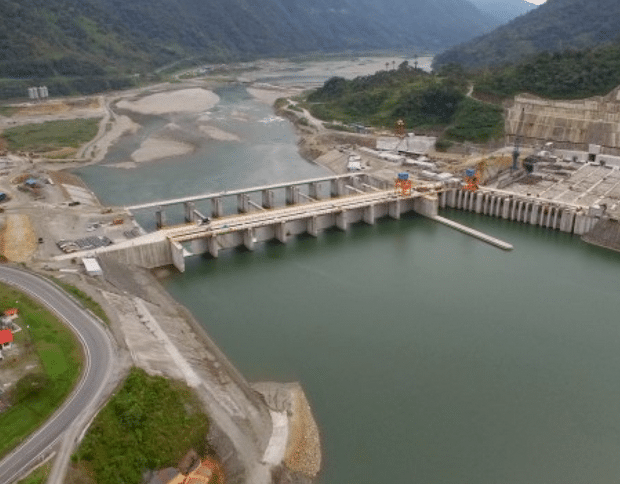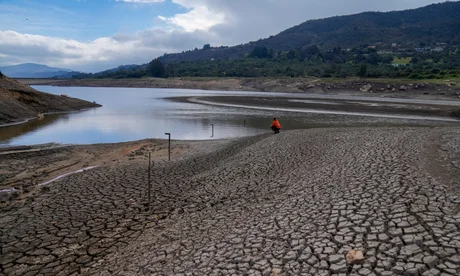Why isn’t the Coca Codo Sinclair hydro plant generating the electricity it was designed for?
By Liam Higgins
While concerns grow about the dropping reservoir level at the Paute-Mazar hydroelectric complex, energy experts say the lack of production at the Coca Codo Sinclair is being overlooked. Coca Codo, located between Napo and Sucumbios Provinces, was designed to generate 1,600 megawatts annually for the national power grid but, so far, in 2024, it has contributed only 640.

The Coca Codo Sinclair hydroelectric plant during construction in 2013.
“Even if it were only producing 1,000 megawatts we would be in a much better position to handle the drought,” says electrical engineering professor Hugo Arcos. “Ten years ago, Coca Codo was presented as the savior of Ecuador’s electric problems. According to the original plans, it was designed to function at a high level even during times of reduced flow rates on the Coca River but, for a number or reasons, including corruption during its construction, it has not lived up to predictions.”
Built by the Chinese company Sinohydro during the government of Rafael Correa, Coca Codo Sinclair was designed to operate based on “flow-through” technology which does not require a reservoir. “The advantage to this is that it should continue to function at high capacity during droughts,” Arcos said. “Without rain, the plants on the Paute River could become inoperable within a matter of weeks since they require a reservoir to function.”
A government consult on Coca Codo Sinclair, Jaimie Ramos, says problems with the project began during the planning stage. “Sinohydro overestimated the flow rate of the river by more than 50% and even though this was pointed out to the government, nothing was said and only during the construction did Sinohydro admit the mistake,” says Ramos. “By that time, the design for the incorrect flow rate was already being carried out.”
Ramos said he and two other project consultants repeatedly pointed out design and construction errors, but we were told not to worry, that these would be corrected later. “When I complained that quality specifications for the steel in the turbines was not being met, my contract was terminated, and I was reminded that I could not discuss constructions issues with the media for 10 years.”
Another consultant was fired after he complained that Sinohydro was using inferior concrete for the intake canals. Ramos said. In a 2019 review of the project, a German consulting firm discovered more than 7,000 cracks in the steel as well as buckling in the concrete intake channels.
A third consultant, also terminated, pointed out incorrect data in the soil samples of the Coca River bottom. “Evidence suggests that Sinohydro may have faked the samples entirely,” says Ramos. “Today, we know about the sedimentation problems that have shut down generation on several occasions and prevent the plant from full function. If the river soil samples had been analyzed correctly, design changes could have made to accommodate for the sediment at the intake points but, instead, construction continued, relying on bad data.”
“We learned later, of course, that Sinohydro was paying millions of dollars in bribes to the government officials who oversaw construction,” Ramos says. He adds that former President Lenin Moreno, vice president during the Correa administration, had overall management of the project.
“Today, it’s obvious why the government ignored warnings by project consultants. They were paid off by the Chinese to look the other way and now, all Ecuadorians are paying a high price.”
According to Ramos and Arcos, many of the problems at Sinohydro may not be fixable. “Privately, the Energy Ministry is already talking about shutting down the plant within seven or eight years,” says Arcos. “They even have a budget for it.”

















